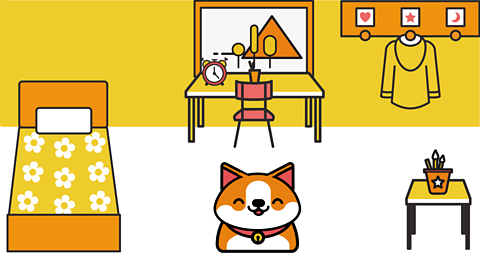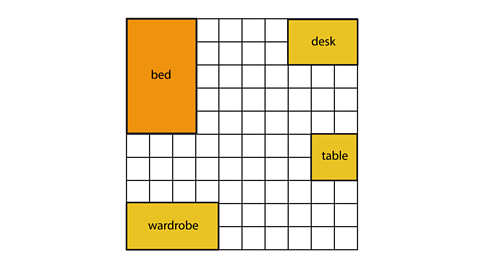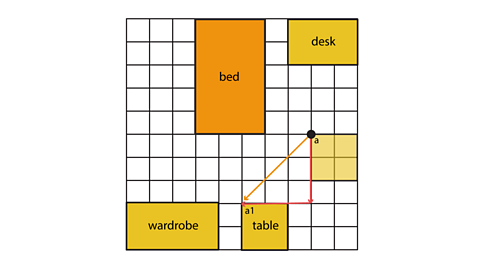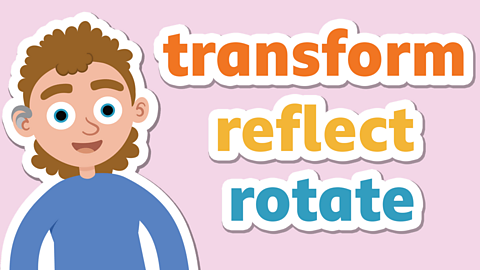What is translation?
Translation is the word we use when shapes move up, down, left and right.
Let's start with a simple problem. We're going to move the furniture in Boo's bedroom around using translation.

Here is a floor plan of the furniture in Boo's room.

Example 1
Boo moves the bed to a new position. How many squares has she moved her bed by?

She has moved her bed by 3 squares.
When a shape is translated, each of the vertices (corners) must be moved in exactly the same way.
The bed has four corners which we've labelled vertex a, b, c and d.
If you count along the squares from each corner you'll see that each vertex has moved 3 squares to the right.

Example 2
Boo has moved the table to a new position.

The table has been moved diagonally, which means the shape has translated up or down as well as left or right.
If we translate one vertex at a time we can see that vertex a has translated 3 squares down and 3 squares to the left.

When a shape is translated all of the vertices stay aligned.
If we know the position of one vertex we can easily work out the position of the other vertices without having to translate them corner by corner.
Activity
Quiz
This activity will help you practise translating shapes.
Play our fun maths game Guardians: Defenders of Mathematica. gamePlay our fun maths game Guardians: Defenders of Mathematica
Use your times tables and more maths skills to defeat monsters and reclaim the Kingdom of Mathematica

More on Position and direction
Find out more by working through a topic
- count1 of 3

- count2 of 3
